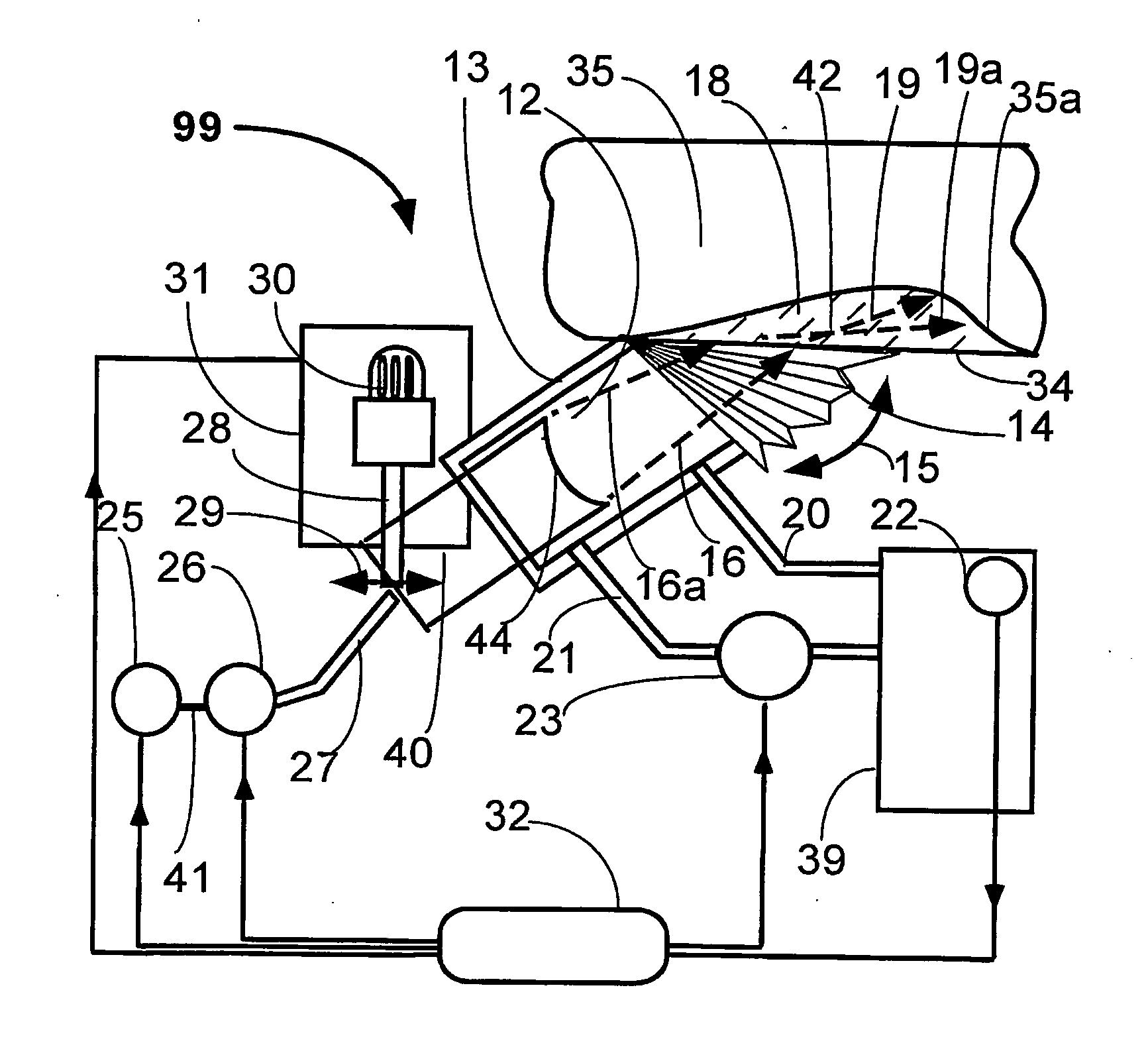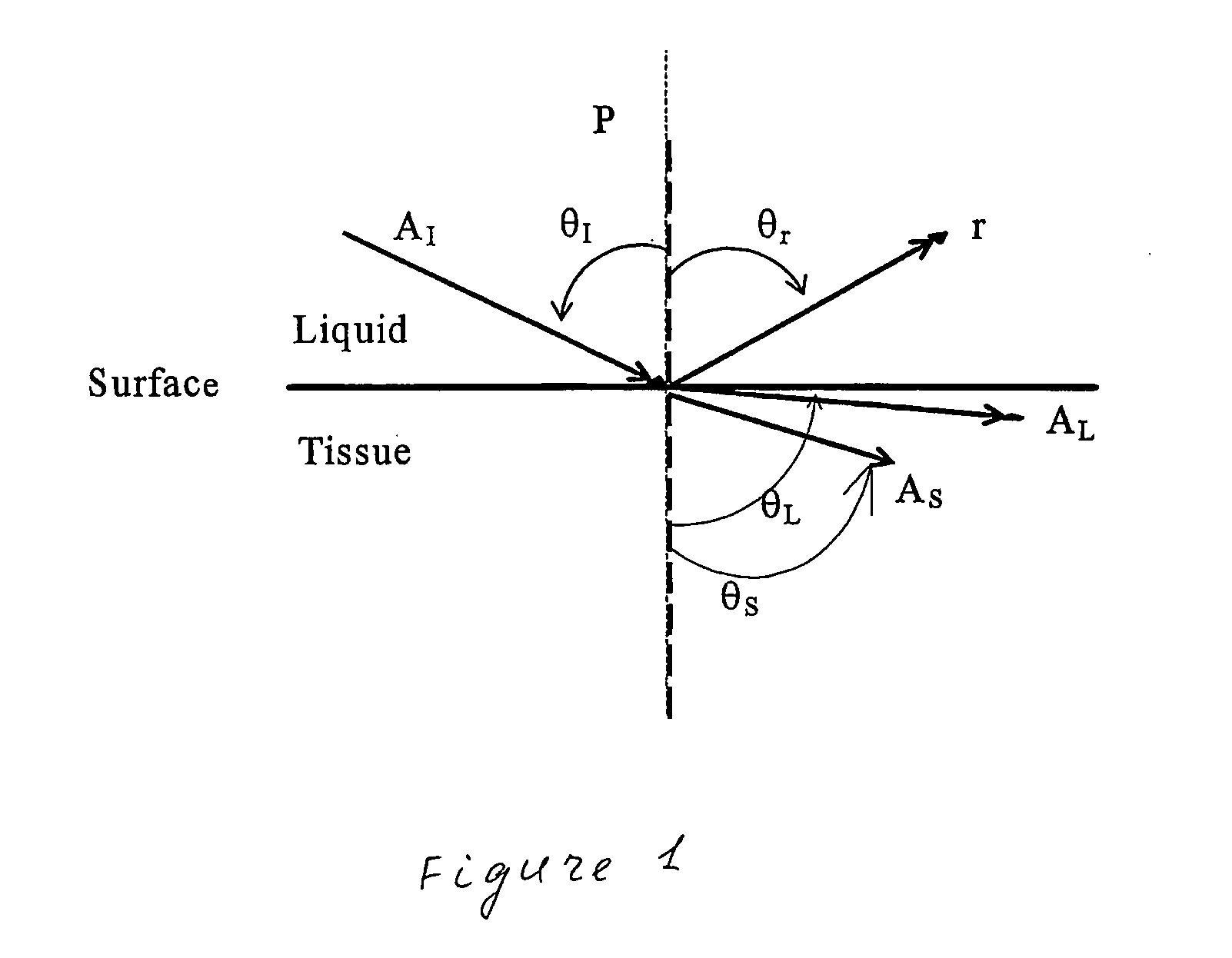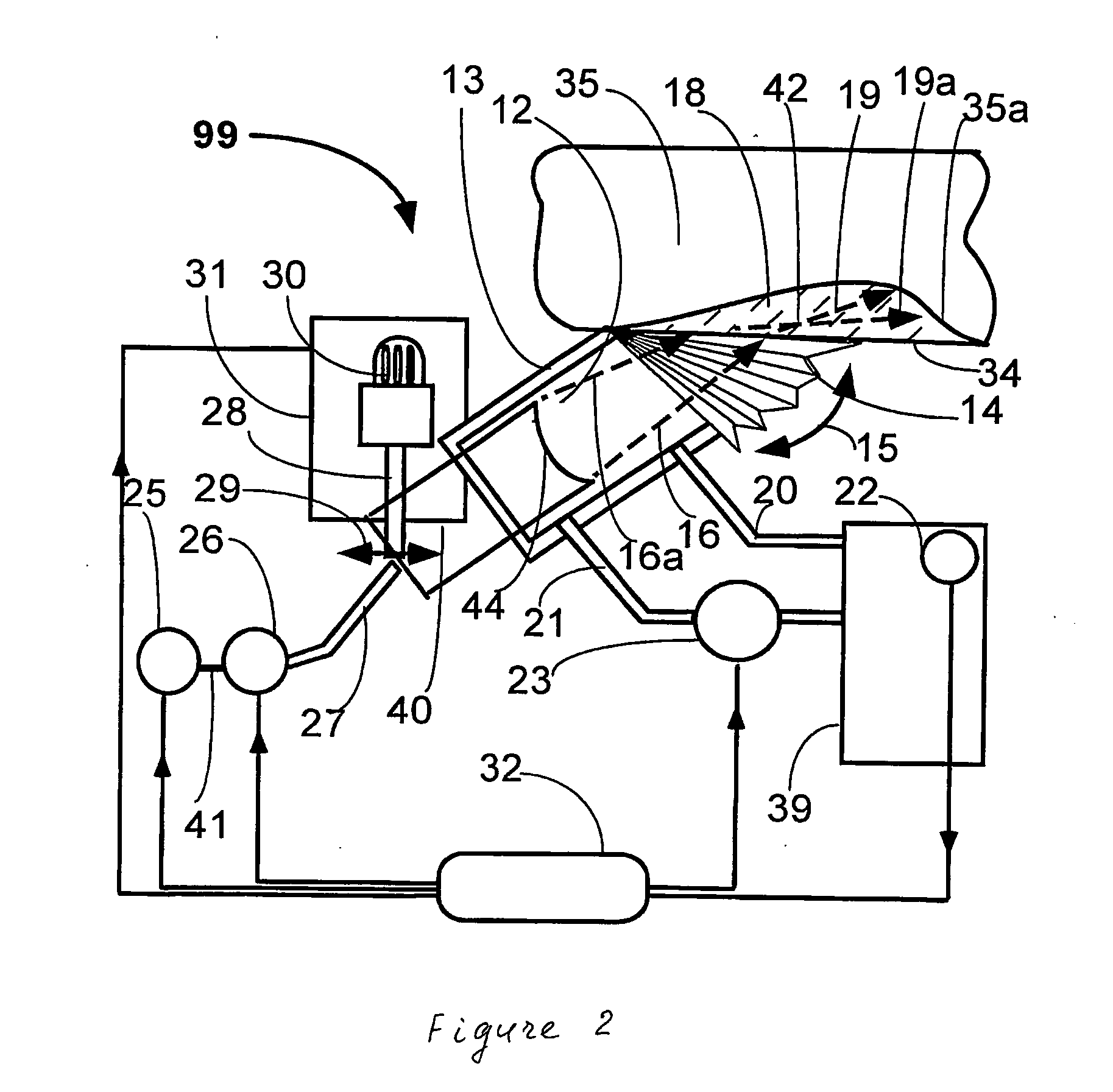[0012] The present invention concerns a method and device for ultrasonically affecting and causing alteration of a certain layer of a multi layered tissue or organ, in a
non invasive or
minimally invasive procedures, and with minor effects other layers of the said treated tissue or organ. It is performed by using the different mechanical properties of the different tissue or organ layers, and the subsequent difference in the relevant sound velocity of the different layers, as selective element for guiding the ultrasonic
waves. The mechanical differences between layers, and between layers and the ambient media, combined with leading element of
irradiation angle, enable shifting of the
waves towards surface staves running in particular layers at least partially parallel or almost parallel to the surface, and therefore affecting particular layers parallel to the tissue or
organ surface without affecting, e.g., deeper tissues. During
irradiation surface is preferably being cooled, enabling creating effects, including thermal effects, at layers deeper to the surface leaving the surface intact.
[0015] For instance when irradiating from water (sound velocity of about 1500 m / sec) into the
skin (sound velocity of about 1,700 m / sec), at an angle greater than about 60 degrees with respect to perpendicular axis, then majority of the refracted waves will run parallel, or almost parallel to the
skin surface, as surface waves. Typically this said angle of 60 degrees is a critical angle for the skin, where most longitudinal waves transferred into interface nature, a rather
mixed mode of longitudinal and of
shear waves. This combined mode is also characterized by
high attenuation and therefore create demarcated effect at attenuation zone, and essentially do not penetrate or affect other locations. Said
interface waves, at least partially run in parallel to the surface, and therefore termed surface waves. When treating layered tissues or organs it provides significant
advantage to treat particular layers without affecting the ambient layers, outer to or deeper to treatment zone.
[0019] The static forces which are created when ultrasonic waves undergo changes in their direction (or in amplitude) further induce
radiation pressure. Surface waves, however, as well as the combined interface mode, can produce all effects that can be created by regular longitudinal waves, including thermal and non thermal effects, heating and
ablation,
cavitation, microstreaming and
shear stress, pressure,
radiation force, torque and streaming.
[0023] By another embodiment of this aspect, the propagation of the
surface wave is deeper to the
organ surface, e.g., at the
smooth muscle layer of a coronary
artery. In accordance with this embodiment of the invention, the irradiation is from the vessel lumen and in direction of the length axis of the vessel. The propagation of the ultrasonic waves in the target is carried out at the
muscle layer of the vessel, leaving the internal endothelial cells intact. In this embodiment, the blood inside the vessel is used as both ultrasonic
coupling agent, and as cooling liquid, further provides heat protection for the inner endothelial cells by conduction and
convection.
Irradiation is in a minimally
invasive procedure.
[0025] By another embodiment of this aspect, the method is used as add-on to another method to achieve synergic effect. According to tie teaching of pending application PCT EL99 / 00533, the
ultrasound waves are transmitted at a rather
high intensity, along hair shafts by using the hair as wave guides, till dissipation at the
follicle, for
hair removal. According to the present invention, ultrasonic waves are transmitted as surface waves and reach the
hair follicle at an angle which is essentially perpendicular to the direction of the growth of the
hair shaft. A
combined method suggests irradiation of surface waves together with irradiation via the
hair shaft at
lower intensity. Ultrasonic characteristics for the two irradiations shall be those that when combined together the total disturbance at the
follicle area of the hair will be constructive. Furthermore, the
combined method will
advantage the different sensitivity of skin's components to heat. The
follicle cells (which are of epidermal origin) are sensitive to heat and will receive vectorial combination of the two irradiations. Concomitantly, the collagen fibers which covers the follicles invaginations, are much less sensitive and will anyhow receive only the
surface wave irradiation. This will provide improved
hair removal.
[0029] The ultrasonic parameters used with the appropriate surface waves are interconnected, so that when reducing intensity at certain frequency, the reduction of
total energy can be compensated by increasing duration of the energy application; or when increasing frequency, resulting in increase in flow of energy (assuming that both reach desired depth), the increase may be compensated by decrease in intensity
treatment duration etc. Focused beam, either regular or by phase array might be used to increase irradiation intensity of a layer, whereas increased frequency might be used to reduce the travel length of the waves in a layer.
 Login to View More
Login to View More  Login to View More
Login to View More 


